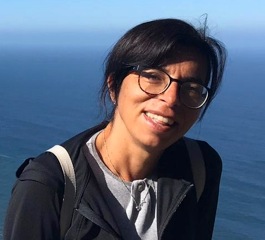Profile
 |
Almerinda Di Venere divenere@med.uniroma2.it Office/Location Medicina Tel: +39 06 72596464 Fax: +39 00 0000000 |
Biography
Biography
Education
M.S. University Degree in Physics, Rome Tor Vergata
PhD in Biology and Physiopathology of Epithelium University of Rome Tor Vergata
Advanced Courses
-“III national School on Synchrotron radiation”, Italy, 1995.
-“Summer School – Applications of Synchrotron Radiation in Life
Sciences and Chemistry”Italy, 1996.
-“Sixth International Summer School on Biophysics – Supramolecular
Structure and Function”. Rovinj, Croazia, 1997.
-“Protein Structure”. Italy, 1998.
-School of the Italian Pure and Applied Biophysics Society “Spectroscopies and Computational Methods in the Study of Biological Systems”; Italy, 1999.
Actual position
From 2002 Full Research in Biochemistry, “Tor Vergata” University, Rome.
Research
Research Activity
Protein structure to function relationship:
a. conformational stability studies of proteins by equilibrium unfolding measurements;
b. kinetic measurements of the folding/unfolding process of metal containing proteins;
c. structural and functional behavior of monomeric and oligomeric enzymes under high pressure condition.
Spectroscopic techniques:
A. Di Venere has a very good knowledge of fluorescence dynamics (both in phase and time-resolved techniques), circular dichroism and rotational dynamics measurements of proteins in solution..
She is author of about 50scientific publications in the fields of optical spectroscopy of biological molecules, fluorescence instrumentation and biomaterials
Publications
Selected Publications
- Di Paola L, Mei G, Di Venere A, Giuliani A. Exploring the stability of dimers through protein structure topology. Curr Protein Pept Sci. 17:30-6 (2016) IF=2.
- Di Venere A, Nicolai E, Sinibaldi F, Di Pierro D, Caccuri AM, Mei G. Studying the TRAF2 binding to model membranes: The role of subunits dissociation. Biotechnology and Applied Biochemistry 65:35-45 (2018) IF=1.4
- Carbonaro M, Ripanti F, Filabozzi A, Minicozzi V, Stellato F, Placidi E, Morante S, Di Venere A, Nicolai E, Postorino P, Nucara A. Human insulin fibrillogenesis in the presence of epigallocatechin gallate and melatonin: structural insights from a biophysical approach. International Journal of Biological Macromolecules (2018) IF=3.67
- Ceccarelli A, Di Venere A, Nicolai E, De Luca A, Rosato N, Gratton E, Mei G, Caccuri AM. New insight into the interaction of TRAF2 C-terminal domain with lipid raft microdomains. Biochim Biophys Acta – Molecular and Cell Biology of Lipids 1862:813-822 (2017) IF=4.779
- Carbonaro M, Di Venere A, Filabozzi A, Maselli P, Minicozzi V, Morante S, Nicolai E, Nucara A, Placidi E, Stellato F. Role of dietary antioxidant (-)-epicatechin in the development of β-lactoglobulin fibrils. Biochim Biophys Acta – Proteins and Proteomics 1864:766-72 (2016) IF=3
- Rufini A, Cavallo F, Condò I, Fortuni S, De Martino G, Incani O, Di Venere A, Benini M, Damiano S Massaro D M, Arcuri G, Serio D, Malisan F, Testi R: Highly specific ubiquitin-competing molecules effectively promote frataxin accumulation and partially rescue the aconitase defect in Friedreich ataxia cells. Neurobiology of disease. 75: 91-99 (2015) IF=5.5
- Ceccarelli A, Di Venere A, Nicolai E, De Luca A, Minicozzi V, Rosato N, Caccuri AM, Mei G. TNFR-Associated Factor-2 (TRAF2): Not Only a Trimer. Biochemistry 54:6153-612015 (2015) IF=2.9
- Bobone S, Miele E, Cerroni B, Roversi D, Bocedi A, Nicolai E, Di Venere A, Placidi E, Ricci G, Rosato N, Stella L. Liposome-Templated Hydrogel Nanoparticles as Vehicles for Enzyme-Based Therapies LANGMUIR, (2015)


